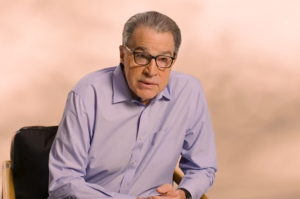Postcard from Luxembourg

It is hard not to describe Luxembourg as reminiscent of the backdrop of a cheesy Hallmark or Lifetime movie — you know, commoner girl marries heir to the throne — set in some fictional European realm.
Of course, the Grand Duchy of Luxembourg is very much a real country with real inhabitants, known as Luxembourgers, who speak Luxembourgish, though French is the lingua franca. Grand Duke Henri has reigned over the country, historically a bastion of Roman Catholicism, since 2000. With a population of 626,108 souls spread across 998 square miles of land, which works out to about half the size of Delaware, it is surrounded by Belgium, France and Germany at the crossroads of Europe.
This smallness gives Luxembourg considerable appeal. Not least because you can do and see so much over the course of just a couple days — making it a perfect destination. In fact, the compact country is one of Europe’s best-kept secrets.
The eponymous capital of Luxembourg City was my base for three nights and four days. I split my time between here and the rest of the grand duchy.

My first stop was the National Museum of History and Art. Located within the heart of Ville Haute or the Upper Town, the museum is a great way to learn about Luxembourg’s unexpected history.
A couple of blocks away is the modest but ornate Grand Ducal Palace, seat of the grand duchy’s monarchy. Sentries from the Luxembourg Army mount a guard at the main entrance off Rue du Marché-Aux-Herbes (literally Herb Market Street).
Another way to get familiarized is through a guided walking tour, including a three-hour ecclesiastical heritage tour (150 euros or about $174 per group, not per person). Among the churches to visit are St. Michael’s Church, largely rebuilt in the late 17th century by King Louis XIV of France, and the medieval Quirin Chapel, named after St. Quirin of Neus, at the site of an old Roman pagan shrine.

Luxembourg City was for centuries encircled by fortifications, parts of which survive. Today, the ruins offer up romantic vistas of the cityscape, especially in the morning when fog can blanket the Grund or Lower Town with its landmark former Benedictine abbey in the valley beneath the old walls.
Outside the capital, I took day trips to Vianden and the valley of the Moselle River.
In Vianden, I discovered cobblestone streets lined with houses and churches older than America. Some may know the place as the one-time home of Victor Hugo. The big draw, however, is the Vianden Castle, an 11th century castle straight out of a fairy tale.
Centered around Remich on the banks of the Moselle in southeastern Luxembourg is the country’s wine industry. While viticulture has existed here since the Romans, Luxembourgish wine is almost entirely consumed within the grand duchy.
In addition to Riesling and other ubiquitous varietals, wines are produced from a rather interesting white grape called auxxerois. Most wineries and vineyards can be found off the Route du Vin or Wine Route, which parallels the river for 26 miles. The better-known wineries include Caves St. Martin and Domaine Alice Hartmann.
If you go
While there are no direct flights to and from Luxembourg, it is just one stop away from major U.S. airports. Several European airlines that fly transatlantic routes also serve Luxembourg’s airport, including British Airways, KLM and Lufthansa.
While you could explore Luxembourg without a rental car — thanks to free public transportation — getting around, particularly outside the capital, is logistically easier with a car.
Stay at the Sofitel Le Grand Ducal, a five-star hotel, or the Hotel Parc Beaux-Arts with its location by the Grand Ducal Palace and National Museum of History and Art.
Be sure to also purchase the Luxembourg Card. At a cost of €28 euros or about $32 per person for three days, it more than covers the numerous admission charges and tours.
Follow @dennislennox on Instagram and Twitter.
Dennis Lennox writes about travel, politics and religious affairs. He has been published in the Financial Times, Independent, The Detroit News, Toronto Sun and other publications. Follow @dennislennox on Twitter.



























